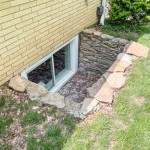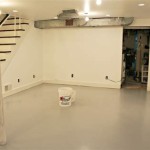Basement Wall Insulation Vapor Barrier: An Essential Guide
Moisture is a major threat to any basement, leading to everything from mold and mildew to structural damage. A critical line of defense against moisture is a vapor barrier, which prevents water vapor from penetrating your basement walls and causing problems.
In this article, we will discuss the essential aspects of basement wall insulation vapor barriers, including:
- What is a vapor barrier?
- Why is a vapor barrier important?
- What are the different types of vapor barriers?
- How to install a vapor barrier
What is a Vapor Barrier?
A vapor barrier is a material that prevents the passage of water vapor. Vapor barriers are typically made of plastic, such as polyethylene or polyvinyl chloride (PVC), or metal, such as aluminum.
Vapor barriers are installed on the interior side of basement walls to prevent water vapor from the soil outside from penetrating the walls and condensing inside the basement.
Why is a Vapor Barrier Important?
A vapor barrier is an important part of a basement waterproofing system because it helps to prevent moisture problems in the basement. Moisture can cause a number of problems in a basement, including:
- Mold and mildew growth
- Rot and decay of wood
- Corrosion of metal
- Structural damage
By preventing water vapor from penetrating the walls, a vapor barrier can help to keep your basement dry and free of moisture problems.
What are the Different Types of Vapor Barriers?
There are two main types of vapor barriers:
- Permeable vapor barriers allow some water vapor to pass through them, while impermeable vapor barriers do not.
- Impermeable vapor barriers are more effective at preventing moisture problems, but they can also make your basement more airtight, which can lead to other problems, such as indoor air quality issues.
The type of vapor barrier that you choose will depend on the specific needs of your basement.
How to Install a Vapor Barrier
Installing a vapor barrier is a relatively simple process, but it is important to do it correctly to ensure that it is effective. Here are the steps on how to install a vapor barrier:
- Clean the walls: Remove any dirt or debris from the walls.
- Apply the vapor barrier: Unroll the vapor barrier and apply it to the walls, starting at the bottom and working your way up.
- Overlap the joints: Overlap the joints between the pieces of vapor barrier by at least 6 inches.
- Seal the seams: Use a vapor barrier tape to seal the seams between the pieces of vapor barrier.
- Trim the excess: Trim any excess vapor barrier from around the edges of the walls.

How Should I Finish An Existing Basement Wall Jlc Online

Be Sure To Use A Moisture Barrier When Building Out Your Basement

How To Install A Basement Vapor Barrier Hgtv

No Vapor Retarders On Interior Side Of Air Permeable Foundation Insulation Building America Solution Center

Etw Foundation 1 Xps 2x4 Wood Framed Wall With Fiberglass Batt Buildingscience Com

Understanding Vapor Barriers The Green Cocoon

How To Insulate Your Basement Like A Pro

Healthy Basement Insulation Systems Quality Built Basements Llc

Bsd 103 Understanding Basements Buildingscience Com

Basement Wall Vapor Barrier System In Stamford Norwalk West Hartford Retardant Ct








